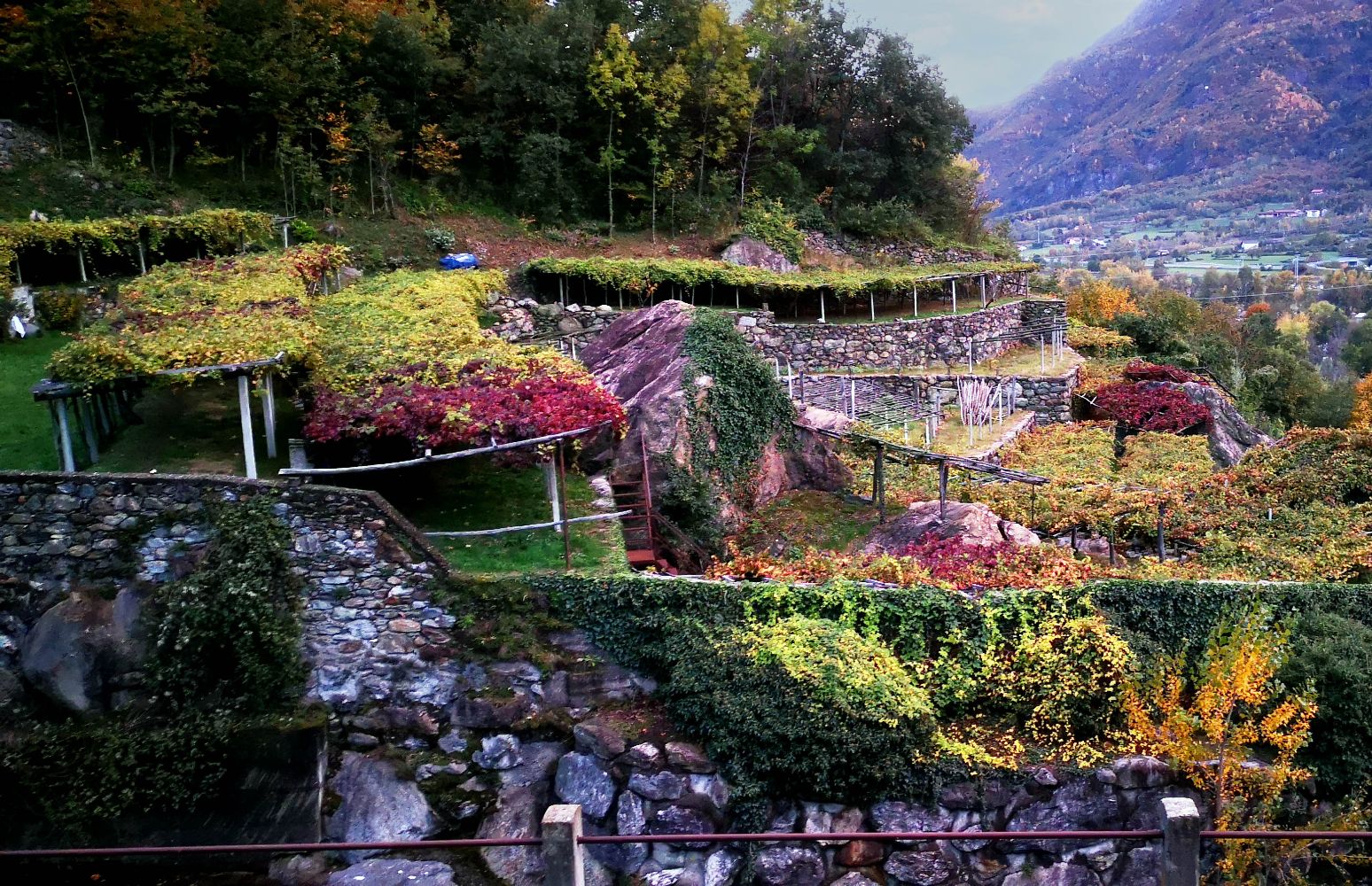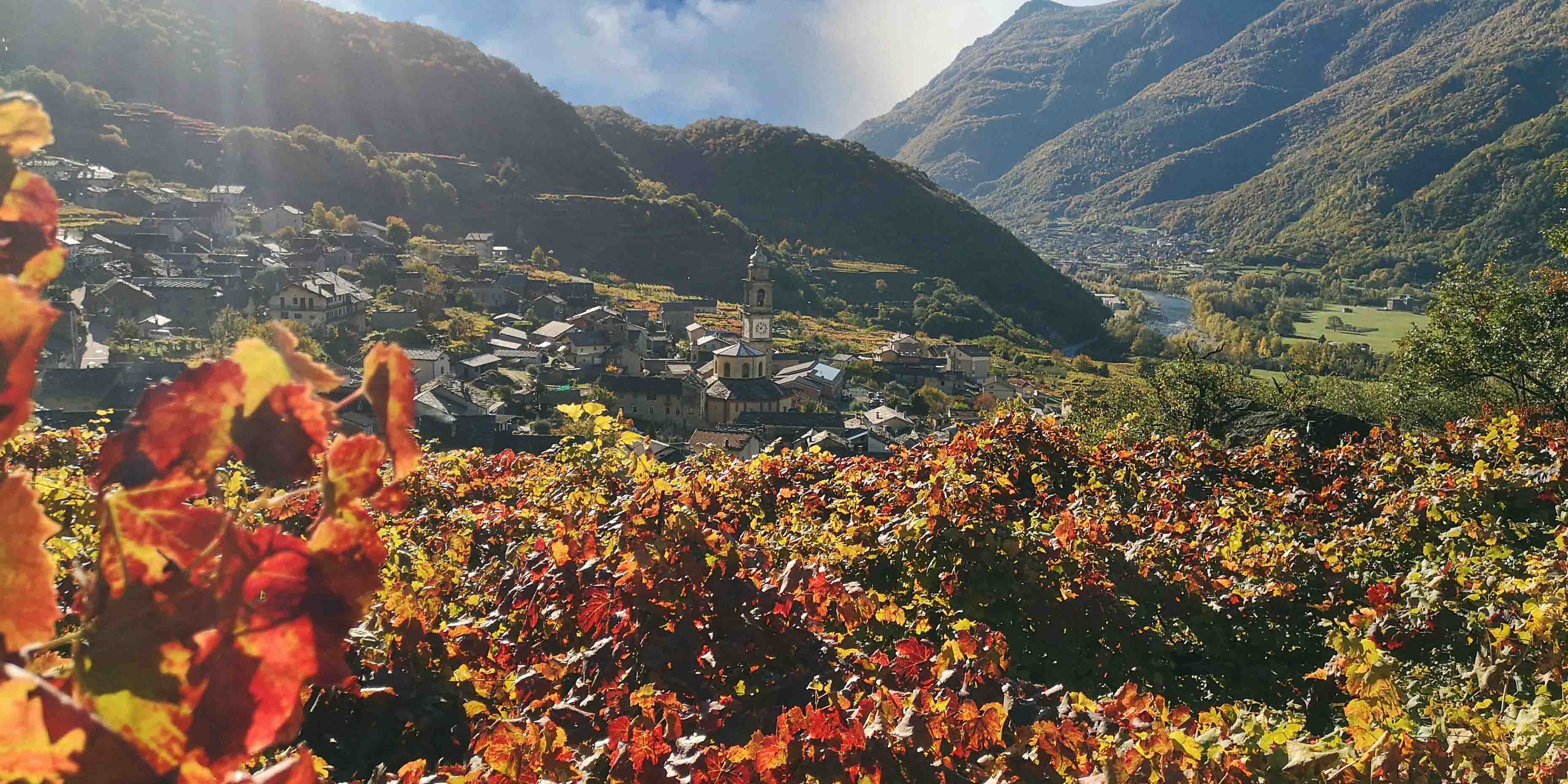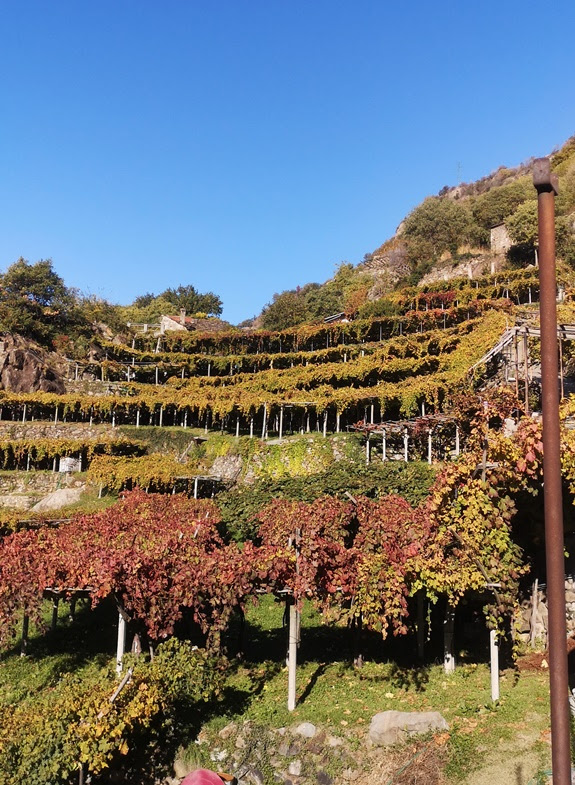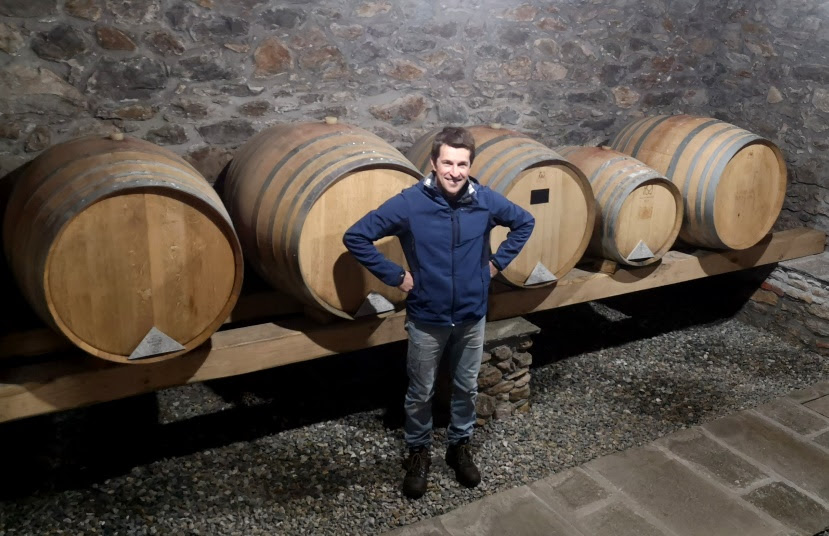My love affair with the vineyards [by Carlo Macchi, Editor of Winesurf] A cautionary note: the following should not be taken as the impartial account by a journalist but rather of a man in love, who will try to explain the lightning strike that has gripped him ever since. My passion is called Carema and I’ll admit it loud and clear: in almost forty years of wine touring I have never been impressed so instantly and profoundly by vineyards. Carema is located at the extreme western edge of the area called Canavese, where Piedmont bids adieu and Valle d’Aosta bienvenue to its massive mountains. Carema is not in the mountains (the town lies at 349 meters above sea level), but it feels as if it were, because its vineyards, reaching 750 meters of altitude, have been wrested from Monte Maletto, which every now and then tries to take them back. It has tried many times, including during World War II, due to the conflict and the industrialization that took away workers from the vineyards of Carema, leaving many in a state of abandon. I mention World War II, but Carema was famous long before that, as a label of Roberto Ferrando from early in the last century proves. Not only was the wine produced, but it was bottled and sold successfully. But before commerce came the vineyards. Some call the viticulture of Carema heroic, which it certainly is, but I prefer to define it as “architecturally artistic” due to the creation long ago of what might be called “terrace-pools.” These were formed by shifting or crumbling enormous boulders to form pools into which good soil (mostly sand, with small percentages of silt and clay) was deposited, hauled by hand from the valley below. The valley of Carema is of morainic origin, but under the rocks of Monte Maletto there was, well, more rocks. That’s why I have prosaically called the vineyards of Carema terrace-pools because they were filled with enough earth to give the vines a start, a bit of soil before they began to forge their way into the rock. The vines were (and are) trained to practically lean against the rock. Then over time, as they grow, their roots sink into the heart of the mountain and the shoots rise and come forth to be trained onto wooden pole arms supported by columns of stone. This, more than just viticulture, is a form of architectural art. It is based on a series of support beams (summier) and longitudinal currents (perciè) supported by stone columns (pilun) placed at the front of the terrace. Each terrace seems to have a window on the valley framed by two or more columns—a spectacle of human ingenuity. Considering that few of these structures are found in the plains, that nearly all cling to the slopes at the heights, means human ingenuity also requires the strength and will to work them. The vineyards have come back slowly over the years, after risking abandon and reaching a low point of 10 hectares. Today, thanks to the fundamental contribution of the Slow Food Presidium, they are back to 23 hectare and producers say that with time they could “reopen” almost 40 hectares of vineyards. You may say that’s nothing, a speck in the immensity of wine. But jewels are precious because they are rare, all the more so if they’re found in some of the most picturesque vineyards anywhere—a place that well deserves to be a UNESCO World Heritage site. The grape of Carema is Nebbiolo, here called picotendro, but it is not alone. There are, in fact, other ‘hyper-autocthonous’ grapes (or clones of Nebbiolo) occasionally found in the vineyards. They give their contribution to this extreme viticulture, where yields are so low that one of the grapes I was most impressed with is called neyret, with big berries but little substance (it looks rather like a table grape); in the end it lends mass to the finished wine, boosting the low yields of Nebbiolo and adding a touch of something ethereal. This blend makes wines that have the soul of Nebbiolo—the style, the radiant freshness, the graceful depth—without burdening the body with excessive weight. But here in Paradise the body doesn’t count; Dante never said how much Beatrice weighed, but her diaphanous beauty never suffered for that. The irony of it is that in order to make wine in this paradise you have to descend (or, rather, ascend) into the hell of fatigue, because here everything is done by hand after you arrive at the vineyards by foot. If you’re lucky, you can do a bit of road by Api (a motorized mini-truck named aptly for a bee). But few mountain roads can handle anything the size of cars, so the last stretch to the vineyards must be reached by foot and inclines are steep. Consider that a vineyard in the plains, if adequately mechanized, requires 250 to 300 hours of labor per year; in Carema 1,400 to 1,600 hours is often not enough. Here viticulture has its own rules. For example, many vines are so long, with multiple branches, that you often can’t tell which vine you are pruning on a terrace, so you rely on the number of total buds. What’s more, harvest times are so extensive that even now they often stretch out to the first days of November (with all the risks that entails). Vittorio Garda, one of the youngest producers involved in the revival of Carema at his micro-farm named Sorpasso, founded in 2014, says, “I was lucky to to find beautiful vineyards to work in Carema.” It may have been rude of me but I changed that to, “I was lucky to find vineyards I have to walk up to every morning, work my ass off and barely earn a living.” He laughed, but in fact a problem of Carema could be summarized as “when it comes to wine, labor doesn’t count.” Here we touch on an issue that involves the history of the territory and the Cantina Produttori di Carema cooperative, which produces excellent, I repeat excellent, wines at incredibly low prices. But this is Carema’s past, present and perhaps its future: tiny parcels of vines, tended after work, for family use. In the past, grapes were vinified in microscopic cellars with results that were not always satisfactory. So both Ferrando (a historic producer) and the Cantina Produttori di Carema equipped themselves to take the grapes and vinify them properly. Ferrando has grown and tried to place a fair (but certainly not sufficient) value on the labor of Carema. But the Cantina di Carema continues to pursue a price policy that for customers is a gift from the gods, but for wine producers is a perennial headache, because, data in hand, a bottle of Carema cannot cost less than 30/40 euros when sold directly at the winery. Federico Santini, together with his partner Deborah, has been producing Carema under the Muraje label since 2012. He rightly claims a fair price for his wine, which involves not only agricultural endeavors but also the restoration and preservation of an asset (the land and the mountains) that belongs to everyone. Unfortunately, when it comes to conservation, public authorities are silent, so hope for the future lies with a small group of young producers who, together with Federico and Vittorio, are devoting their lives to re-evaluating Carema’s vineyards. Carema produces distinct Nebbiolo, with colors lighter than those of Barolo and Barbaresco but with freshness that gives them special appeal. The body is there—never mind if earlier I wrote the opposite, they were the words of a platonic lover. In fact, tasting the new wines of Vittorio and Alessandro, as well as the historic labels of Ferrando and the Carema cooperative, the body is certainly not lacking, but it is less influential in the elegance of the wine, which unfolds from a strikingly sunny acidity to melt into finely sweet but firm tannins. With Vittorio Garda I visited the vineyards, first by climbing like mountain goats in the sumptuous setting as the sun went down, and then returning at nightfall to a welcome tasting in the Sorpasso cantina. The wines left their mark, especially those aged in small barrels that showed notable differences between their places of origin. They made me think that the few bottles produced should be divided into individual “crus” but that’s hardly possible in the tiny zone of Carema with its enormous differences in altitude and exposure. I next visited the Muraje winery of Federico and Deborah Santini, whose cellar is so small that there’s no room to sit. But there is enough space to enjoy fresh but already elegant and vital wines, with marked differences from one to the other and brilliant colors. Brilliant like the sunshine as we made our way from an Api to the vineyards where Federico gave us a lesson about the different grapes of Carema. We’ve already mentioned neyret (or neretto) a generic term in Canavese which applies to similar grapes under different names: neyret gamba rossa, ner d’ala, vernassa. Then there’s pugnet, probably a clone of Nebbiolo found only in Carema, with shoots so long that they form arbors over the streets as magical tunnels. The wines of Vittorio, Alessandro and Deborah could be defined as “modern,” due not only to the process of vinification and maturation in small barrels, but also to the way they’re presented, with due respect to a great agricultural heritage. This heritage is represented by the Cantina Produttori Nebbiolo di Carema, founded in the late 1950s as the symbol of enological resistance of the territory. Their wines, together with those of Ferrando, have been lights that illuminated the shadows hanging over this splendid land of vines. These two wineries in the past faced a challenge in offering their services as centers for processing the grapes harvested by small-scale farmers, who were hard to convince that they could make better wines than at their hit-and-miss family operations. Today almost forty thousand bottles of Carema are produced each year by the Cantina Produttori di Carema and sold at bargain prices, as mentioned, especially if one considers the quality of the wines, which have a more traditional style than those of Sorpasso and Muraje. Roberto Ferrando runs the family winery, founded in 1890 and renovated in 1957 to produce Carema and other wines of Canavese, notably the white Erbaluce di Caluso. But the emphasis remains on Carema, which is issued under two labels, Etichetta Bianca (about 7,000 bottles a year), and Etichetta Nera (about 3,000 bottles). Exemplary wines that reflect the distinct character of the vineyards. I’m hoping to return to Carema soon, because I still have to get to know more of the courageous winemakers, appreciate their wines and, above all, understand how they manage to make a living producing 3,000 to 4,000 bottles a year, working three or four times as long in the vineyards than the vast majority of producers, and still be happy. The secret might be that they carry out their labor of love in the vineyards of paradise. ### This article on Carema marks the start of an informal collaboration with Carlo Macchi, editor of the website Winesurf. Carlo will contribute occasional articles and photos in exchange for my referral to tasting notes on Italian wines (without the point ratings) compiled from the constantly updated Winesurf panel files on more than 4,500 wines a year. A huge thanks to Carlo for understanding that, much as I’d like to at my age, I don’t get around much anymore.



©burtonanderson 2022
Carema mon amour!
Carema mon amour!
2021-12-29 20:21
2021-12-29 20:21
Array() no author 81926
Notes from Enotria,

